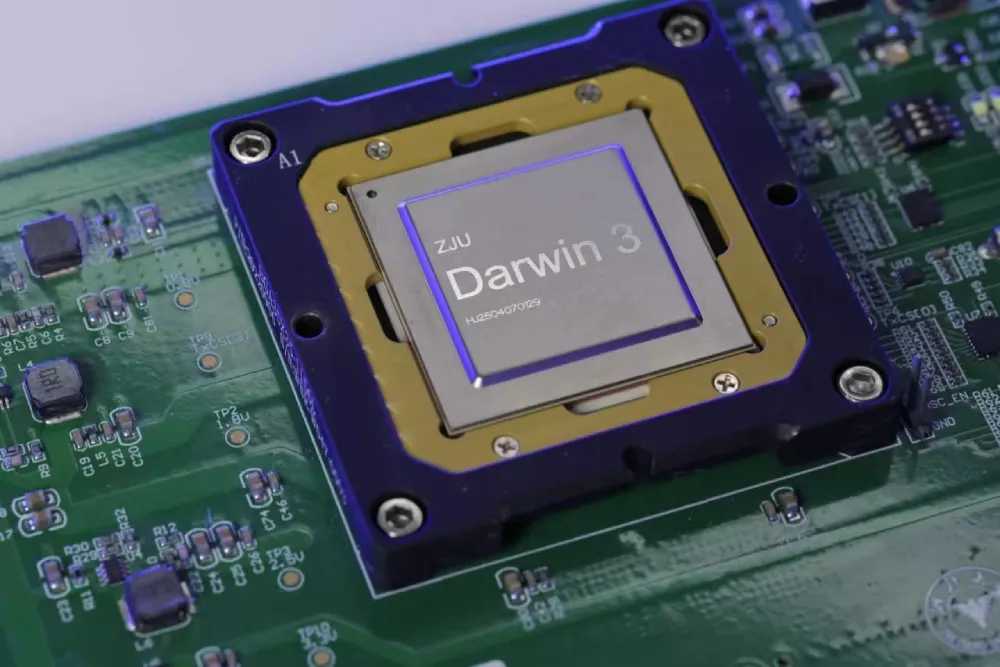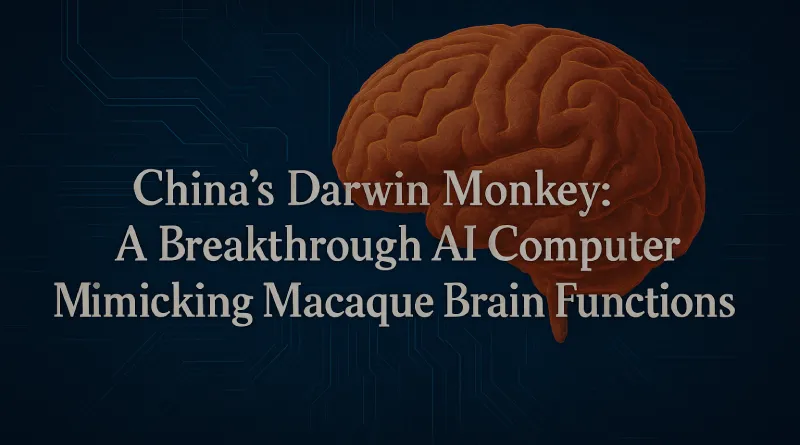China’s Darwin Monkey: A Breakthrough AI Computer Mimicking Macaque Brain Functions
The Darwin Monkey, the world’s first neuromorphic computer, is powered by 960 Darwin 3 chips developed by Chinese engineers at the Zhejiang University State Key Laboratory of Brain-Machine Intelligence with more than 2 billion spiking neurons and 100 billion synapses, comparable to the computational complexity of a monkey brain. This brain-like system that goes by the name of Wukong was started on August 2, 2025, with enhanced vision, hearing, and language capabilities as well as learning capabilities with a mere consumption of 2,000 watts by regular standards, as noted by Xinhua. This breakthrough makes China, which has an AI industry of 7.8 billion dollars (NASSCOM, 2025), one of the leaders of brain-inspired computing, raising the game in China and around the world and raising ethical discussions.
Instead of the conventional AI chips, Darwin Monkey employs neuromorphic technology, which replicates biological neural networks to achieve high-efficiency processing on low power. It executes a brain-like model of DeepSeek and is an eight-branch powerful computer that takes neural networks and executes animal brains, such as zebrafish and mice brains, providing neuroscientists with instruments to diminish species-specific biological research, according to Global Times. This has the potential to spur domestic development of neuromorphic systems, with 1.5 million AI researchers in India (AICTE, 2024) (most of whom will be based in Bengaluru, the tech capital, where 40 percent of AI startups concentrate on low-power computing, per Tracxn).

Its size (2.15 billion neurons) exceeds the Hala Point system offered by Intel (1.15 billion neurons), which represents a step up from Zhejiang in 2020 (120 million neurons). Its unsupervised learning emulates the primate mind and has the possibility of becoming artificial general intelligence (AGI). But ethical considerations are reminiscent of the 2019 experiments of putting human genes into the brains of macaques, described by Western researchers such as James Sikela as a “treacherous path,” according to CNN. X posts such as the one by @rohanpaul_ai laud the technology, but other posts doubt the speed of AI rather than human control. In the case of India drawing up its 2026 plan on governance of AI (MeitY), Darwin Monkey highlights that a sense of balance between progress and responsibility should be achieved in the global race of AI at all costs.
Disclaimer
The information presented in this blog is derived from publicly available sources for general use, including any cited references. While we strive to mention credible sources whenever possible, Web Techneeq – Web Developer in Mumbai does not guarantee the accuracy of the information provided in any way. This article is intended solely for general informational purposes. It should be understood that it does not constitute legal advice and does not aim to serve as such. If any individual(s) make decisions based on the information in this article without verifying the facts, we explicitly reject any liability that may arise as a result. We recommend that readers seek separate guidance regarding any specific information provided here.

